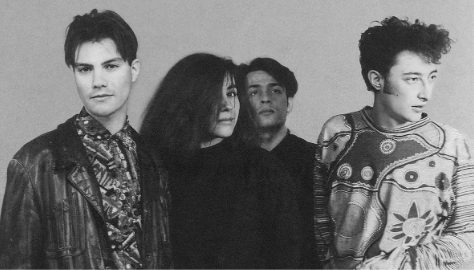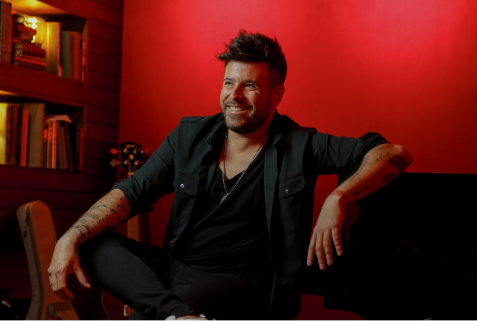Who said studying Spanish had to be boring? At MaestroMío, we believe music is one of the best ways to learn a language: it improves your vocabulary, sharpens your listening skills, and most importantly… you have a great time!
Today we bring you a list of Spanish songs (yes, from Spain) that have not only been very popular, but also reflect the country’s culture, society, art, and the evolution of the language. From pure flamenco to modern indie, including powerful lyrics with a message, you’re in for a great playlist (and a few tricks to learn Spanish!).
1. Soy gitano – Camarón de la Isla

Genre: Pure flamenco
Year: 1989
Why is it famous? Because Camarón is not just a singer—he’s a legend! This song marked a turning point in flamenco.
What can you learn? Vocabulary from the gypsy world, colloquial expressions, and emotion. Lots of emotion.
Active listening tip: Pay attention to the Andalusian accent, the rhythm of the singing, and the emotional intensity.
2. Malamente – Rosalía

Genre: Urban flamenco
Year: 2018
Why is it famous? Because Rosalía revolutionized flamenco with this song by mixing it with trap—and she won a Grammy.
What can you learn? Modern colloquial Spanish, cultural expressions, and some millennial slang.
Active listening tip: Notice how she blends tradition and modernity. Do you understand what “malamente” means?
3. Quédate – Quevedo (con Bizarrap)

Genre: Urban pop
Year: 2022
Why is it famous? It was the song of the summer across half the world. And yes, while Bizarrap is Argentine, Quevedo is Spanish (from the Canary Islands!).
What can you learn? Canarian accent, informal structures, and lots of party/post-party vocabulary.
Active listening tip: Spot words you won’t find in textbooks… but everyone uses them.
4. A quién le importa – Alaska y Dinarama

Genre: 80s pop rock
Year: 1986
Why is it famous? Because it’s a freedom anthem—from the Movida Madrileña to today.
What can you learn? Expressions of rebellion, independence, and commonly used present tense structures.
Active listening tip: The lyrics are clear and repetitive—perfect for practicing pronunciation.
5. Lo malo – Aitana y Ana Guerra

Genre: Feminist pop
Year: 2018
Why is it famous? It went viral and became a female empowerment anthem in Spain.
What can you learn? Emotional vocabulary, negative sentence structures, and verbs in the present and imperative.
Active listening tip: Pay attention to how they use very natural phrases you could use in real conversations.
6. Mediterráneo – Joan Manuel Serrat

Genre: Singer-songwriter
Year: 1971
Why is it famous? Because it was voted the best Spanish song of all time (and with good reason!).
What can you learn? Poetic language, sensory imagery, past verb tenses, and more complex structures.
Active listening tip: If you’re at an intermediate level, this one is your challenge. Slow but deep.
7. Zapatillas – El Canto del Loco

Genre: Pop rock
Year: 2005
Why is it famous? It was a youth anthem in the 2000s and still lives on in nostalgic playlists.
What can you learn? Present tense verbs, informal expressions, and negative sentence structures.
Active listening tip: Notice how many verbs start with “yo no quiero que…” (I don’t want…).
8. Tu canción – Amaia y Alfred

Genre: Ballad
Year: 2018
Why is it famous? It represented Spain at Eurovision and made everyone emotional.
What can you learn? Future tense, conditional, expressions of affection.
Active listening tip: Ideal for practicing slow, clear pronunciation.
9. Un buen día – Los Planetas

Genre: Spanish indie
Year: 2000
Why is it famous? It marked the beginning of modern Spanish indie music.
What can you learn? Past narration, everyday phrases, and daily-life vocabulary.
Active listening tip: Pay attention to how a story is told using simple phrases.
10. El patio – Pablo López

Genre: Dramatic ballad
Year: 2018
Why is it famous? Because it’s deeply moving. Simple as that.
What can you learn? Compound tenses, emotional expressions, reflective sentences.
Active listening tip: Perfect for improving listening comprehension and linguistic empathy.
How can you use these songs to learn Spanish?
- Listen without looking at the lyrics. Try to understand the general context.
- Then look up the lyrics. Highlight words you don’t know.
- Sing. Yes, sing. Even if you’re out of tune! It helps with pronunciation.
- Do mini activities: change the verb tenses, write a continuation to the story, invent a new verse…






